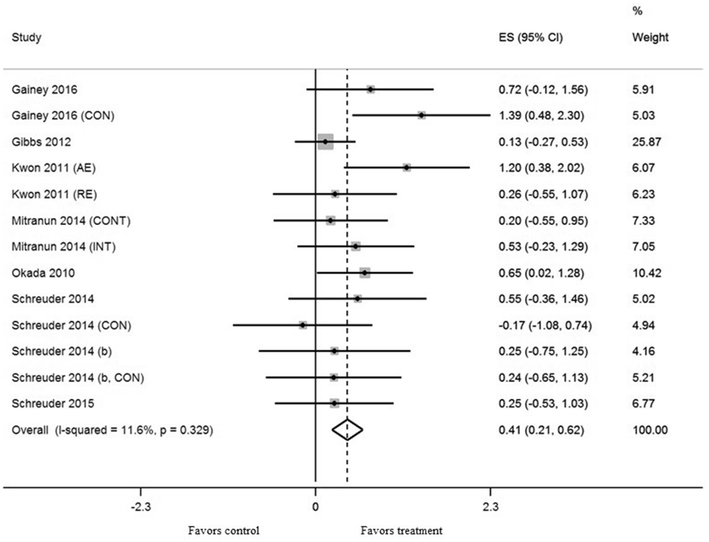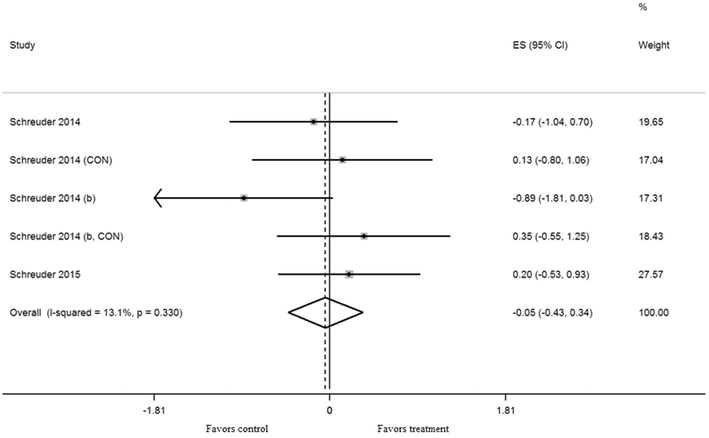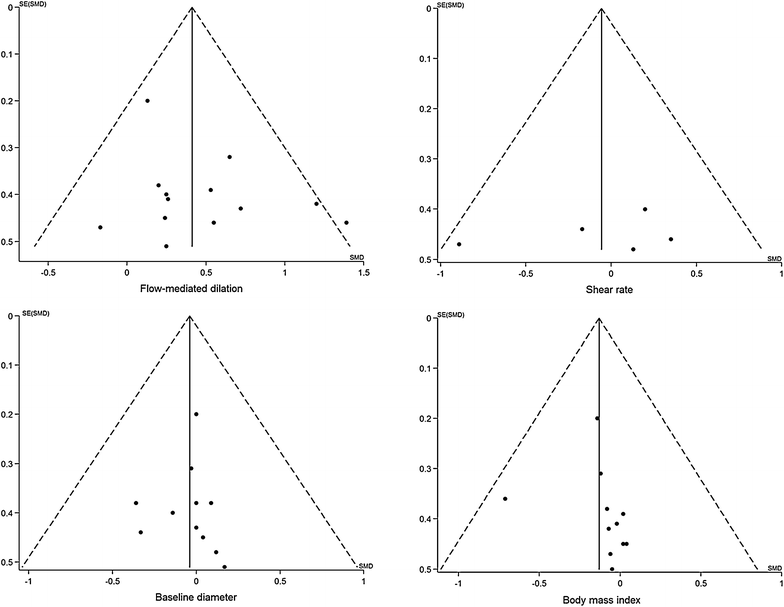The effects of exercise on vascular endothelial function in type 2 diabetes: a systematic review and meta-analysis
- PMID: 29541164
- PMCID: PMC5840787
- DOI: 10.1186/s13098-018-0316-7
The effects of exercise on vascular endothelial function in type 2 diabetes: a systematic review and meta-analysis
Abstract
Background: Vascular endothelial dysfunction induced by hyperglycemia and elevated insulin resistance is a potent risk factor for cardiovascular disease and likely contributes to multiple chronic disease complications associated with aging. The aim of this study was to systematically review and quantify the effects of exercise on endothelial function (EF) in type 2 diabetes (T2D).
Methods: Five electronic databases were searched (until June 2017) for studies that met the following criteria: (i) randomized controlled trials; (ii) T2D aged ≥ 18 years; (iii) measured EF by brachial artery flow-mediated dilation (FMD); (iv) structured and supervised exercise intervention for ≥ 8 weeks.
Results: Thirteen cohorts, selected from eight studies (306 patients, average age 59 years), met the inclusion criteria. Exercise training significantly increased FMD (mean ES = 0.41, 95% CI 0.21-0.62, P < 0.001). Low to moderate intensity subgroups and aerobic exercise (AE) subgroups significantly increased FMD more than moderate to high intensity subgroups and combined AE and resistance exercise subgroups respectively (P < 0.01, P < 0.05). The Grading of Recommendations Assessment, Development and Evaluation (GRADE) assessments reported that quality of evidence for all outcomes was moderate except shear rate showing low. Egger's test showed no significant publication bias for all outcomes.
Conclusion: Our results suggest that in patients with T2D, lower intensity exercise has physiological meaningful effects on EF, in support of the emerging concept that the lower efforts of exercise are not necessarily less cardioprotective than higher intensity training.
Keywords: Endothelial function; Exercise training; Flow mediated dilation; Low intensity exercise; NO bioavailability; Sedentary; Type 2 diabetes.
Figures






References
-
- American Heart Association. Statistics about American heart disease. 2015. http://www.heart.org/HEARTORG/Conditions/More/Diabetes/WhyDiabetesMatter.... Accessed Aug 2015.
Publication types
LinkOut - more resources
Full Text Sources
Other Literature Sources
Miscellaneous

